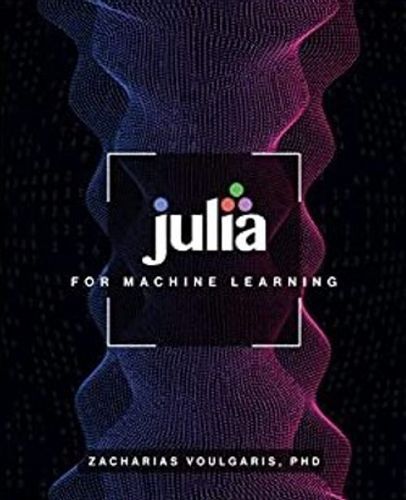Readings Newsletter
Become a Readings Member to make your shopping experience even easier.
Sign in or sign up for free!
You’re not far away from qualifying for FREE standard shipping within Australia
You’ve qualified for FREE standard shipping within Australia
The cart is loading…






This title is printed to order. This book may have been self-published. If so, we cannot guarantee the quality of the content. In the main most books will have gone through the editing process however some may not. We therefore suggest that you be aware of this before ordering this book. If in doubt check either the author or publisher’s details as we are unable to accept any returns unless they are faulty. Please contact us if you have any questions.
Unleash the power of Julia for your machine learning tasks. We reveal why Julia is chosen for more and more data science and machine learning projects, including Julias ability to run algorithms at lightning speed. Next, we show you how to set up Julia and various IDEs such as Jupyter. Afterward, we explore key Julia libraries, which are useful for data science work, including packages related to visuals, data structures, and mathematical processes. After building a foundation in Julia, we dive into machine learning, with foundational concepts reinforced by Julia use cases. The use cases build upon each other, reaching the level where we code a machine learning model from scratch using Julia. All of these use cases are available in a series of Jupyter notebooks. After covering dimensionality reduction methods, we explore additional machine learning topics, such as parallelization and data engineering. Although knowing how to use Julia is essential, it is even more important to communicate our results to the business, which we cover next, including how to work efficiently with project stakeholders. Our Julia journey then ascends to the finer points, including improving machine learning transparency, reconciling machine learning with statistics, and continuing to innovate with Julia. The final chapters cover future trends in the areas of Julia, machine learning, and artificial intelligence. We explain machine learning and Bayesian Statistics hybrid systems, and Julias Gen language. We share many resources so you can continue to sharpen your Julia and machine learning skills. Each chapter concludes with a series of questions designed to reinforce that chapters material, with answers provided in an appendix. Other appendices include an extensive glossary, bridge packages between Julia and other programming languages, and an overview of three data science-related heuristics implemented in Julia, which arent in any of the existing packages.
$9.00 standard shipping within Australia
FREE standard shipping within Australia for orders over $100.00
Express & International shipping calculated at checkout
This title is printed to order. This book may have been self-published. If so, we cannot guarantee the quality of the content. In the main most books will have gone through the editing process however some may not. We therefore suggest that you be aware of this before ordering this book. If in doubt check either the author or publisher’s details as we are unable to accept any returns unless they are faulty. Please contact us if you have any questions.
Unleash the power of Julia for your machine learning tasks. We reveal why Julia is chosen for more and more data science and machine learning projects, including Julias ability to run algorithms at lightning speed. Next, we show you how to set up Julia and various IDEs such as Jupyter. Afterward, we explore key Julia libraries, which are useful for data science work, including packages related to visuals, data structures, and mathematical processes. After building a foundation in Julia, we dive into machine learning, with foundational concepts reinforced by Julia use cases. The use cases build upon each other, reaching the level where we code a machine learning model from scratch using Julia. All of these use cases are available in a series of Jupyter notebooks. After covering dimensionality reduction methods, we explore additional machine learning topics, such as parallelization and data engineering. Although knowing how to use Julia is essential, it is even more important to communicate our results to the business, which we cover next, including how to work efficiently with project stakeholders. Our Julia journey then ascends to the finer points, including improving machine learning transparency, reconciling machine learning with statistics, and continuing to innovate with Julia. The final chapters cover future trends in the areas of Julia, machine learning, and artificial intelligence. We explain machine learning and Bayesian Statistics hybrid systems, and Julias Gen language. We share many resources so you can continue to sharpen your Julia and machine learning skills. Each chapter concludes with a series of questions designed to reinforce that chapters material, with answers provided in an appendix. Other appendices include an extensive glossary, bridge packages between Julia and other programming languages, and an overview of three data science-related heuristics implemented in Julia, which arent in any of the existing packages.